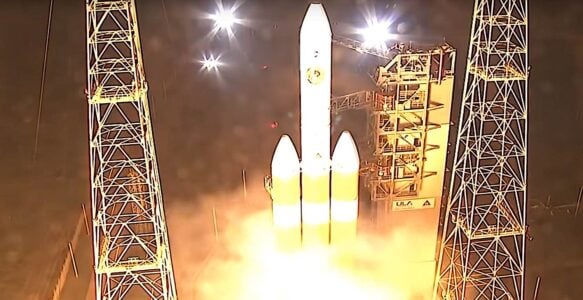The Parker Solar Probe mission is one of the biggest and most important missions undertaken by NASA. This mission aims to explore the Sun and its environment in greater detail than ever before, helping us better understand our solar system and its place in the universe.
The Parker Solar Probe mission has already provided us with valuable insights into the Sun, and it is expected to continue to do so for many years to come. Let’s learn more about The Parker Solar Probe Mission in detail.
The Purpose of the Mission
The primary goal of the Parker Solar Probe mission is to study:
- The Sun’s outer atmosphere, otherwise known as the Corona
- The solar wind.
The mission aims to answer many questions about the Sun that have puzzled scientists for decades.
For example:
- Why is the corona so much hotter than the Sun’s surface?
- How is solar wind produced?
By studying the Sun closely, the Parker Solar Probe helps us better understand how it affects Earth and our solar system.
Mission overview video from NASA:
The History of the Mission
The Parker Solar Probe mission has its roots in the 1950s. This is when Dr. Eugene Parker first proposed the idea of the solar wind.
The scientific community didn’t immediately accept Parker’s groundbreaking work. However, over time, his theories were proven correct.
In 2017, NASA announced that it would launch a spacecraft named after Dr. Parker to study the Sun up more closely. The Parker Solar Probe was launched on August 12, 2018. It has been making discoveries ever since.
The Parker Solar Probe mission is a fitting tribute to Dr. Parker’s legacy. It’s expected to uncover many more discoveries that will continue to build on his incredible work.
Dr. Parker passed away in 2018, just months before the launch of the Parker Solar Probe. However, his contributions to the field of astrophysics will be remembered for generations to come.
A tribute to the late Dr. Parker:
Mission Reports
NASA’s Parker Solar Probe mission blog provides regular updates on the mission’s progress and the latest findings.
Some of the most notable findings from the mission so far include:
Solar Flares
One of the fundamental discoveries made by the Parker Solar Probe is that the Sun’s magnetic field is much more complex than previously thought. This complexity is responsible for many of the Sun’s most dramatic and significant events, like solar flares.
Solar flares are powerful eruptions of energy from the Sun that can have significant effects on Earth. These effects include disrupting satellite communications and causing power outages.
The Parker Solar Probe has captured images of solar flares in unprecedented detail. These images will help scientists better understand how solar flares are formed and how they affect our planet.
Why won’t the solar probe melt? Good question:
Dust Particles
The Parker Solar Probe has also detected microscopic dust particles in the Sun’s environment that were previously unknown. These particles are so tiny that other instruments can easily miss them. However, they could provide valuable information about the early solar system’s formation stages.
The probe has also captured images of the dust particles, helping scientists to understand their properties and origins better.
Solar Storms
The Parker Solar Probe has observed many solar storms, which are caused by the release of energy from the Sun.
Solar storms can have significant effects on Earth, including:
- Disrupting satellite communications
- Causing power outages
By studying solar storms up close, the Parker Solar Probe mission helps scientists better understand how they’re formed and affect our planet. This information is essential for developing better space weather forecasting capabilities. This is important for protecting astronauts and spacecraft from the effects of solar storms.
Solar Wind Origins
The Parker Solar Probe has provided new insights into the origin of solar wind. The probe has discovered that the solar wind is created by small, frequent eruptions of energy from the Sun’s surface instead of one large eruption as previously thought.
This discovery has important implications for our understanding of the Sun and its effects on Earth and our solar system.
The Engineering Feat of the Parker Solar Probe
The Parker Solar Probe is not just a scientific feat but also an engineering marvel. The probe was designed to endure extreme temperatures and radiation, as it gets as close as 4 million miles to the Sun.
To achieve this, the probe comes with a 4.5-inch thick carbon-composite heat shield that can withstand temperatures up to 2,500 degrees Fahrenheit. The probe also features a series of cooling systems that keep its scientific instruments at the right temperature to function correctly.
The engineering team behind the Parker Solar Probe had to overcome many challenges and issues to design and build a spacecraft that could survive in such a harsh environment. This makes this mission an impressive feat of human ingenuity.

The Role of Artificial Intelligence in the Mission
Artificial intelligence (AI) has played an essential role in the Parker Solar Probe mission. The probe features an AI system that allows it to make decisions autonomously without constant communication with Earth. This is important because it takes several minutes for signals to travel from Earth to the probe, which can be too slow for certain essential decisions.
The AI system on the Parker Solar Probe allows the probe to make real-time decisions based on the data it’s collecting. This has helped optimize the mission and ensure it gathers the most valuable data possible.
The Hunt for Dark Matter
As well as studying the Sun, the Parker Solar Probe is also searching for evidence of dark matter. Dark matter is a mysterious substance that’s believed to make up most of the matter in the universe.
Dark matter has never been directly observed. However, scientists believe it exists because of its gravitational effects on visible matter.
The Parker Solar Probe is searching for evidence of dark matter by studying the interactions between the solar wind and hypothetical dark matter particles. If the Parker Solar Probe detects an excess of energy in these interactions, it could be a sign of dark matter. This would be a significant discovery in the field of astrophysics.

The Implications for Future Space Missions
The Parker Solar Probe mission has already provided valuable insights into the Sun and its environment. It’s expected to continue to do so for many years to come.
Scientists around the world will analyze the data collected by the probe. It will be used to develop better space weather forecasting capabilities. This is essential for protecting astronauts and spacecraft from the effects of solar storms.
The Parker Solar Probe mission is also paving the way for future space missions that will study other planets and objects in our solar system closely. By developing new technologies and techniques to study the Sun, the Parker Solar Probe helps to advance the field of space exploration and expand our understanding of the universe.
The Parker Solar Probe and Climate Change
The Parker Solar Probe mission has important implications for our understanding of climate change. By studying the Sun and how it affects the Earth’s climate, scientists can better understand how our planet’s climate is changing and what we can do to help.
The Parker Solar Probe provides valuable data on how the Sun’s radiation and magnetic fields affect Earth’s atmosphere and climate. This is essential for developing more accurate climate models and predicting future climate patterns.
By studying the Sun closely, the Parker Solar Probe helps to shed light on one of the most pressing issues facing our planet today.
The Future of the Mission
The Parker Solar Probe mission is expected to continue for several more years. Scientists are eagerly anticipating the data that will be collected during future flybys of the Sun.
The mission will provide us with a better understanding of the Sun’s behavior and how it affects Earth and our solar system. The data from the mission will also help us to develop better space weather forecasting capabilities. This will be important for protecting astronauts and spacecraft from the effects of solar storms.
The Importance of the Parker Solar Probe Mission
The groundbreaking Parker Solar Probe mission has already provided valuable insights into the Sun and its environment. It has already confirmed many theories and uncovered new mysteries about the Sun that will keep scientists busy for years to come.
The Parker Solar Probe is a testament to the power of scientific curiosity and the importance of exploring our universe, and we can’t wait to see what it uncovers next.
- Discover more about advancements in the aerospace industry here>>


































